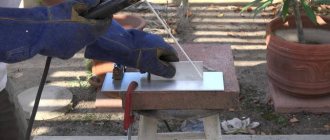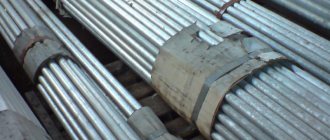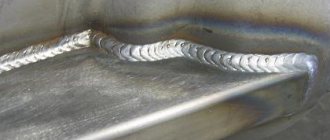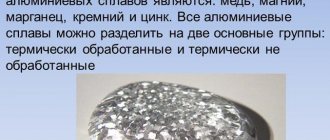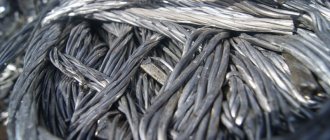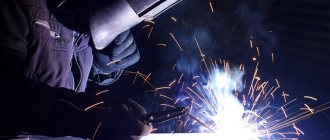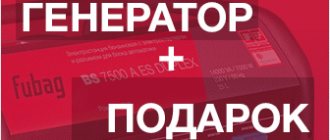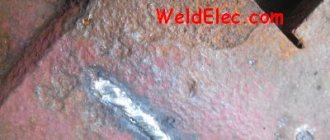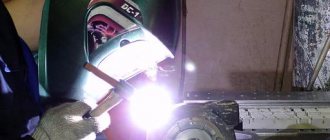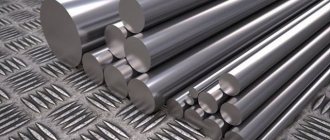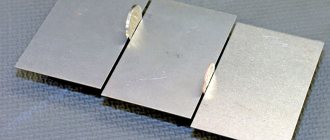05/31/2019 Author: VT-METALL
Issues discussed in the material:
- Why welding aluminum is difficult
- How to properly organize welding of aluminum and its alloys
- Is it possible to weld aluminum parts manually using electrodes?
- What modern aluminum welding methods are used in production?
Aluminum parts have high thermal conductivity and low weight. These properties of the material have made it very popular in various manufacturing fields. However, the technology for welding aluminum and its alloys is not so simple. It is necessary to take into account many different factors and characteristics of the material in order to perform welding work at a high level. In our article we will talk in more detail about what aluminum joining technologies exist and how they differ from each other.
Features of welding aluminum and its alloys
Sometimes during welding work on aluminum or aluminum alloys, difficulties arise that significantly affect the quality of the welds. Here are examples of the most common problems:
- The weld pool is quite difficult to control due to the high fluidity of the material. Hence the need to use heat-dissipating pads.
- Aluminum oxidizes easily, which causes a refractory film to form on droplets of molten metal. As a result, joining into a single seam becomes difficult. Properly organized reliable protection of the welding area from ambient air helps prevent the appearance of a film.
- On the surface of aluminum products there is always an oxide film of Al2O3, which has a melting point of about +2040 °C, while the metal itself melts at a temperature of +660 °C.
- Significant shrinkage of the material can cause deformation of the weld after it cools and solidifies.
- A decrease in the mechanical characteristics of the material is possible due to the tendency to pore formation and cracks in the seam.
- Due to the high thermal conductivity of aluminum, high operating current is required for welding work.
VT-metall offers services:
The listed difficulties are quite surmountable, so the popularity of various aluminum welding technologies does not decrease. This metal allows you to create very strong and reliable structures.
What causes the low weldability of aluminum?
There are several reasons why aluminum has low weldability:
- Products made of aluminum and its alloys are coated with a refractory oxide film , which has a higher density and melting point than the metal itself. This complicates the welding process and contributes to contamination of the deposited metal.
- The formation of a weld pool is difficult due to the high fluidity of aluminum in the molten state. Therefore, the use of heat-dissipating pads is recommended.
- A high coefficient of linear expansion leads to deformation of the joint during its cooling.
- The composition of aluminum includes hydrogen , which reduces the ductility and strength of the metal. When solidified, hydrogen tends to escape, which contributes to the formation of defects in the seam: pores and cracks.
- The high thermal conductivity of this metal requires welding using powerful heat sources.
Aluminum welding technology: preparation of materials and parts
To create a high-quality welded joint, it is necessary to take full care to ensure that the welding area is protected as much as possible from all kinds of contamination:
- For gas-electric welding of aluminum, a clean, dry, dust-free room should be allocated.
- The air speed should not exceed 0.2 m/sec.
- The workpieces and filler wire must be thoroughly cleaned using the methods provided by the technology.
- As shielding gases, only pure argon grade A according to GOST 10157–62 and high-purity helium (high purity) according to MRTU 51-04-23-64 can be used.
- Gas supply fittings, hoses and welding torch are thoroughly washed with alcohol before starting welding work and then periodically re-cleaned and washed as work proceeds.
The technology for high-quality cleaning of welding wire includes washing off the preservative lubricant with a solvent or hot water, and removing the oxide film by chemical treatment.
We recommend articles on metalworking
- Steel grades: classification and interpretation
- Aluminum grades and areas of their application
- Defects in metal products: causes and search methods
To perform the above work, it is necessary to organize a special place, separate from the welding area. Chemical treatment technology involves several cleaning methods. The most popular chemical cleaning method is the following sequence:
- Etching in a 5% solution of caustic soda NOH at a temperature of +60...+65 °C for 2-3 minutes;
- Rinse in hot (+45…+50 °C) water, and then in cold running water.
- Clarification in a 15–30% solution of nitric acid HN03 at a temperature of +60…+65 °C for 2-3 minutes;
- Rinse in hot (+45…+50 °C) water, and then in cold running water.
- Drying at a temperature not lower than +60° C until moisture is completely removed.
If you do not have the opportunity to immediately use the welding wire after drying, then store it in a specially designated place. A box or cabinet with tightly closing doors is suitable for this.
The treated wire can be stored for no more than 12 hours if it is a filler wire of small diameter (up to 1.6 mm) for working at low currents with a non-consumable electrode.
If we are talking about thicker wire (4-5 mm) for working with a consumable electrode at currents above 400 amperes, then a longer storage period is allowed (up to one and a half days). In this case, the quality of the weld will not be affected. It is only important to follow the rules for storing processed wire and aluminum welding technology. During work, the prepared wire should not be handled with hands without gloves, as this can lead to grease particles getting onto its surface.
It is advisable to carefully process the part itself and its edge before welding. When welding, preference is given to chemical processing of parts, the technology of which is given above. Small-volume products are processed completely, and large workpieces are completely degreased; only the edges and up to 10 cm of the surface from the joint are subjected to chemical treatment.
For small welded joints, the edges are cleaned with a scraper immediately before welding. It is also necessary to remove the oxide film in the area of the conductor. This can be done using a scraper or steel wire brush.
If you do not have the opportunity to chemically treat a large part, you can clean the edges with steel wire brushes. In this case, it is advisable to wipe the surface with alcohol or acetone before and after processing the edge.
The bristles of a steel wire brush are made from stainless steel. It is best to use a brush with bristles no larger than 2 mm in diameter. It will allow you to process the edge better without leaving too deep scratches or defects. While processing the part, the brush is periodically washed in solvent.
Treated parts must be stored in a warm, dry place, covering the edges with a clean cover. In this form, it is possible to store parts for the same amount of time as processed filler wire.
If aluminum welding technology requires long-term work (installation, testing, etc.) between cleaning parts and welding, then in this case welding with a large-diameter consumable electrode is used. In addition, it is necessary to ensure that the edges are protected from contamination at all intermediate stages.
If welding is performed in several passes, then at each stage it is necessary to clean the surface of the seam and groove using brushes and acetone.
Aluminum not only conducts heat well, but also has a high heat of fusion (96 cal/g). This property is the basis of aluminum welding technology, since in order to create a high-quality weld, the direct impact of the welding arc on the entire area of contact between the liquid and solid phases of the weld pool will be required.
If a non-consumable electrode is used for the connection, then a bath of liquid metal will form only in the arc burning zone. In this case, it is mainly formed due to the melting of the base metal (usually it contains no more than 30% of the filler material). It features a smooth transition to the base metal.
By joining aluminum with a consumable electrode, you will create a larger depression of the base metal due to a more concentrated arc. Accordingly, the size of the weld pool will be larger, it will contain more than 50% of the deposited metal. In this case, the peripheral part of the bath is not affected by the arc; therefore, non-fusion may occur.
It is important that the shape of the cutting of the edges makes it possible for those places where lack of fusion may occur to be re-melted with an arc when applying subsequent beads. Compliance with edge cutting technology allows you to achieve high quality welds. In any case, the best connection is obtained by performing double-sided welding.
If it is not possible to use the double-sided method, then it is necessary to take measures to prevent and eliminate defects at the root of the seam.
Start and end of seam
When gas-electric welding, it is often necessary to pay special attention to the beginning of the seam and its end. At the beginning of the weld, there is always a section where the welding mode reaches a stationary state, where some parameters of the weld and the weld have not yet reached their optimal or calculated values, which means that the quality of the welded joint does not meet the specified one. At the end of the weld there is also a section where an unfinished or poorly welded crater represents a defect that cannot be eliminated by re-melting.
Consequently, in all cases, if possible, it is necessary to provide for the beginning and end of the seam to be brought out beyond the welded joint onto special technological strips. The strips for the beginning and end of the seam are welded to the parts assembled for welding using semi-automatic or manual welding. They must have the same groove as the parts being welded. The gap between the bar and the part should not exceed 0.3-0.5 mm. If it is impossible to move the beginning and end of the seam outside the welded joint (circular and circular welds; unforeseen stops), then it is necessary to provide in advance ways to eliminate defects at the beginning and end of the seam. When welding with a non-consumable electrode, the most characteristic defect at the beginning of the weld is tungsten inclusions formed at the moment the arc is excited. Therefore, it is advisable to excite an arc on a metal or graphite plate, and then transfer the arc to the joint and remove the plate.
The end of welding must be carried out in such a way as to avoid the appearance of a crater. In manual welding, this is achieved by gradually increasing the welding speed while simultaneously lengthening the arc until it breaks. To fill a crater during automatic welding with a non-consumable electrode, as a rule, a special device is required in the welding current control circuit. For example, resistor, thyratron, thyristor and other schemes for smoothly reducing the welding current are known.
When welding with a consumable electrode, the beginning and end of the seam, which are not brought out on the technological strips, must be removed and re-melted.
Aluminum electrode welding technology
The technology of welding aluminum with electrodes is used very rarely. This method is suitable where it is not possible to use special equipment. That is, it is more often used in the field or in small workshops where they cannot financially afford to purchase the necessary equipment. In this case, the use of electrodes can reduce both costs and time.
There are several brands of commercial electrodes:
- OK - electrodes for aluminum with an admixture of manganese or magnesium. It should be protected from moisture, so do not remove all the rods from the packaging.
- OZANA - there are two varieties here, which differ slightly in application depending on the type and alloy of the metal. Such rods are used for horizontal and vertical welding.
- OZA - consists entirely of aluminum and is similar in production to homemade rods. Used to connect aluminum alloy with silicon.
- UANA - due to their origin and properties, they are intended for welding aluminum alloys and can be deformed.
- EHF - used for welding in an environment where argon is used as protection. These electrodes consist entirely of tungsten.
Electrodes for connecting aluminum parts vary in cost, so when choosing the appropriate option, pay attention to the characteristics that are of paramount importance to you.
1.
Manual arc welding of aluminum with coated electrodes (MMA technology).
Manual joining technology using coated electrodes is used for non-critical structures made of pure aluminum and its alloys: AlSi, AlMg and AlMn. This method is only suitable for products less than 4mm thick.
The disadvantages of this method of joining material are:
- porosity and low strength of the seam, which implies low quality of the connection;
- a large amount of splashes of molten metal;
- poor detachability of the slag crust, which can cause corrosion.
To perform the work, a current of reverse polarity without transverse oscillations is required. It is important to correctly calculate the current using the following formula: 25–30 A per 1 mm of electrode.
If you want to achieve a high-quality connection, it is advisable to heat the parts to a certain temperature before starting welding. For thin and medium-thick parts, a temperature of +250…+300 °C is sufficient. Large products require temperatures up to +400 °C.
Don't forget that the optimal temperature may be specified by the electrode manufacturer. If you find such data, it is better to be guided by it.
2.
Manual arc welding with carbon electrodes.
Aluminum welding technology using carbon electrodes is most often used for non-critical structures. For this type of work you will need direct current of straight polarity.
For dimensional products whose thickness is more than 2.5 mm, it is necessary to cut the edges. The additive diameter should be in the range of 2–8 mm. Paste-like flux can be applied both to the rod and to the working surface.
3.
Manual arc welding with a tungsten electrode in inert gas (AC TIG technology).
This is a very popular method of joining materials, used when it is necessary to obtain a very strong connection with an excellent appearance. The technology of arc welding of aluminum with a tungsten electrode is based on the use of a rod with a diameter of 1.6–5 mm and an additive of 1.6–4 mm.
To perform work using this technology, a protective environment of helium or argon is required. The electric arc is supported by an alternating current source, which gives good results in destroying the oxide film.
- The angle between the electrode and the working surface should be 70–80°; between filler wire and electrode – 90°. Arc length – from 1.5 to 2.5 mm.
- The additive is fed in short reciprocating movements. Transverse movements of the electrode and filler rod are unacceptable.
- The burner moves after the rod.
- A copper and steel gasket should be placed under the aluminum product, which will act as a heat sink. This will prevent the formation of holes, especially when working with thin metal.
- The dimensions of the weld pool should be minimal.
- The argon supply starts 5–7 seconds before the arc is excited, and turns off 5–7 seconds after it breaks.
Advantages
- Gas welding of aluminum helps to carry out the welding process at lower speeds, which gives a higher level, because the welding speed here is approximately three times less than with electric welding;
- Here gas is used as protection against external factors;
- There is no need to use electrodes with coating, which often contains hydrogen, which leads to the appearance of stress in the metal;
- The quality level of the connection is much higher, even if the work is not carried out by an experienced craftsman;
- It is possible to create longer continuous seams thanks to the use of welding wire;
- Easier to work with thin workpieces;
- The burner flame can be used to heat parts and subsequently cool them.
Technology of manual electric arc welding of aluminum
- To perform welding work on aluminum, direct current with reverse polarity is required (swap the connectors on the inverter). It is important to observe the ratio of power and electrode diameter and regulate the current using the following formula: 30 amperes for each millimeter of diameter.
- The parts to be welded must be preheated. For medium thickness, the workpiece is heated to +200…+300 °C. Large parts require higher heating (up to +400 °C).
- Despite the usual arc formation, a feature of working with aluminum will be a higher burning rate of the electrodes. Accordingly, greater speed will be required when forming the seam.
- Be sure to plan the length of the seam based on the melting of one electrode. The welding process cannot be interrupted. The slag crust that forms at the end of the weld will prevent the arc from being ignited again in this place.
- Compared to welding steel blanks, it is prohibited to make lateral movements when joining aluminum parts.
- When finishing work, immediately remove slag from the joint. Clean everything with a wire brush and rinse with hot water.
Safety Features
It is important to remember that resistance and any other welding of aluminum is a difficult and responsible process. It must not only be performed correctly, but also safely, otherwise you can seriously harm yourself and other people around you. To avoid this, it is necessary to follow safety precautions during welding that will provide maximum protection to the performer.
Important protection recommendations include:
- During the welding process, it is imperative to use protective equipment - a mask, mittens, rubberized shoes, asbestos or tarpaulin, sheet material. These elements must be used without fail, regardless of whether it is welding a simple aluminum bicycle frame or heavy structures;
- all elements of the electrical circuit must be completely insulated;
- In no case should you carry out welding work in rooms with flammable objects;
- There should be ventilation in the room, it will help prevent gas poisoning.
Welding aluminum is a responsible and difficult task that requires great care. The success of its implementation depends on accurate and strict compliance with all rules and regulations. It is important to know the main difficulties that can lead to deterioration in the quality of the weld. But useful recommendations will help you quickly eliminate them without compromising the strength of the metal.
Also, any method of welding aluminum requires special equipment and consumables that will allow welding to be carried out efficiently and correctly.
Welding aluminum with argon: technology, instructions, nuances of the process
According to the technology of welding in an argon environment, high demands are placed on both the welding machine and additional equipment that ensures proper storage and supply of consumables. All these parameters are of decisive importance when forming a weld.
Argon welding of aluminum and its alloys can be performed with the following equipment:
- a source of electric current to which the welding machine and all other equipment will be connected;
- a cylinder in which the protective gas argon is stored;
- a mechanism responsible for feeding filler wire into the welding zone.
The technology for performing welding work using argon at large industrial enterprises is well established. In this case, the shielding gas is supplied through a centralized network. Whole reels are formed from welding wire and installed on a semi-automatic welding machine. All work is performed on special workbenches, the surface of which is made of stainless steel.
A high-quality weld is obtained only when the parts being joined are thoroughly cleaned of various types of contaminants (grease, dirt, oil). Cleaning is done using a solvent. For sheet blanks with a thickness of more than 4 mm, edge cutting is required. In this case, welding work is carried out end-to-end. To remove the refractory oxide film from the surface of the product, it is necessary to treat the joint with a file or a wire brush. With a complex connection configuration, processing with a grinding machine is possible.
The technology of welding aluminum semi-automatically in an argon environment has a number of characteristic features. When performing work semi-automatically or with manual supply of the additive, you will need tungsten electrodes with a diameter of 1.5–5.5 mm. When forming a welding arc, the electrode must be positioned at an angle of 80° to the surface of the parts.
The manual feed of filler wire technology allows an angle of 90° relative to the electrode. In this case, the filler wire moves in front of the electrode. This is very clearly visible in the demonstration videos, which show the process of welding using argon.
| Modes of argon arc welding of aluminum with a tungsten electrode | ||||
| Metal thickness, mm | Diameter, mm | Current strength, A | ||
| Tungsten electrode | filler wire | In argon | In helium | |
| 1-2 | 2 | 1-2 | 50–70 | 30–40 |
| 3-4 | 3 | 2-3 | 100–130 | 60–90 |
| 4–6 | 4 | 3 | 160–180 | 110–130 |
| 6–10 | 5 | 3-4 | 220–300 | 160–240 |
| 11–15 | 6 | 4 | 280–360 | 220–300 |
Argon connection technology requires maintaining the arc length within 3 mm. In this case, transverse movements of the filler wire are not allowed.
It is advisable to connect thin aluminum sheets on a lining, which can be a steel sheet. This technology facilitates faster removal of heat from the work area, resulting in rare burnouts or leaks of molten metal. In addition, the lining allows you to save energy, significantly increasing the speed of welding work.
The technology of welding aluminum and its alloys using argon has a number of undeniable advantages over other methods of joining workpieces. First of all, this concerns low heating of the parts being connected. This is a very valuable quality when cooking workpieces of complex shapes.
When using an argon connection, a very strong weld is obtained with high uniformity of the material in a given zone, a minimum number of pores, impurities and foreign inclusions. A uniform penetration depth along the entire length of the weld is a very important indicator that distinguishes argon welding technology.
Of course, each technology has its drawbacks, and working with argon is no exception. The disadvantage of this method is the use of complex equipment. Only with proper configuration of the welding machine and additional equipment is it possible to achieve maximum efficiency of all operations, resulting in a high-quality weld.
The determining parameter when setting up all equipment to perform work in an argon or other protective environment is the speed and uniformity of the filler wire feed. If this parameter is violated, the additive is supplied intermittently, the welding arc is interrupted, and the consumption of shielding gas and electricity increases significantly.
How to cook aluminum correctly
The welding process begins with preliminary preparation of the working edges. The main goal is surface cleaning, which is carried out in several stages:
- workpieces must be thoroughly cleaned using chemical compounds;
- after drying, the surface must be degreased with any solvent: acetone, aviation gasoline, white spirit or other liquid;
- if products with a thickness of more than 4 mm are subject to welding, then the edges should be cut;
- the final procedure is to clean the edges from the oxide layer; For this, the following tools are used: a file, sandpaper, a brush with steel bristles.
Semi-automatic aluminum welding technology
Another name for semi-automatic welding is MIG welding. The high productivity of this process is ensured by pulsed equipment, which generates a powerful high-voltage pulse. Under its influence, the oxide shell quickly collapses.
The operating technology of this equipment involves driving each particle of the molten metal rod into the welding area. Thanks to this, a high-quality weld is formed, characterized by high strength characteristics. This is an aluminum spot welding technology.
MIG/MAG connection in semi-automatic mode is made using rather expensive equipment, which not everyone can purchase. But modern craftsmen who are keen on welding have found a way out of this situation by modifying a standard semi-automatic machine used to join aluminum workpieces and stainless steel.
The principle of operation of such a device is similar to a MIG connection, although there are a number of technical features that have a significant impact on the quality of the result obtained:
- Pure aluminum and its alloys cannot be welded with high voltage current and straight polarity. The exact opposite option is used.
- To feed aluminum rods, special equipment is required. This is due to the fact that it is much softer than its steel counterparts and, accordingly, can bend. The special feeder is equipped with four rollers, a small sleeve and a Teflon gasket.
- Non-ferrous metal expands greatly when heated. This feature can cause the wire to get stuck in the feed tip area. Special tips with the Al brand will help prevent this. They can be replaced with standard tip models with an increased diameter.
- Material consumption and quality of the weld are determined by the type of filler wire. High melting rates of the bar may require a higher feed rate. Accordingly, the tip will need to be replaced too often.
Gas welding
Acetylene is most often used as a flammable gas, the flow rate of which (based on burner power) should be 100 l/h per 1 mm. thickness of the welded product. The performer will also need an filler rod, which is a wire made of aluminum or its alloys. Its diameter depends on the thickness of the work product and varies in the range from 1.5 to 5.0 mm.
This technology involves the use of special fluxes that prevent metal oxidation and help remove oxides . Flux is introduced into the working area either together with a filler rod or in the form of a paste onto the edges being welded. Fluxes are removed after welding by washing the welds with warm water or a two percent chromic acid solution.
When welding parts whose wall thickness exceeds 4 mm, it is necessary to cut the edges; over 8 mm. – local or general heating is required. Welding is carried out in the left way.
Modern aluminum welding technologies
1.
Laser welding.
This is a purely production technology with very specific characteristics. Before starting welding work, it is important to very thoroughly clean the product from contamination.
Laser aluminum welding technology allows for amazing joint precision. In this case, the heat-affected zone is quite small, and the seam turns out to be very narrow. In addition, there are other advantages of this method:
- the ability to create seams of complex shapes;
- high level of productivity;
- efficiency of the welding process and (most often) its automation;
- environmentally friendly welding mode;
- welding can be carried out in any spatial position;
- The heat-affected zone is practically not exposed to thermal influence, which allows maintaining all the original properties.
You should also remember the disadvantages of this method:
- high cost of equipment and the entire process as a whole;
- the laser does not process thick-walled products well;
- designed to work with a narrow range of products.
2.
Plasma welding.
Modern technology for welding aluminum using plasma allows one to achieve very good results. This achieves a high concentration of energy and fairly deep penetration.
The technology is similar to the process of joining metals in an argon environment. During the welding process, the metal in the desired location is melted under the influence of plasma. All this action takes place in a protective cloud, thanks to which gases contained in the atmosphere do not enter the weld pool area.
The technology of welding aluminum using plasma involves the use of special equipment - a plasma welding machine. The design of the device is a connection of a plasma torch and a source of alternating and direct current with an inverse value. The plasma torch helps generate a plasma discharge.
There are several modifications of power supplies that differ from each other in current strength, no-load voltage, load duration, etc. Depending on these characteristics, the power consumption of the power source changes.
The plasma torch is equipped with special inlets through which plasma-forming and protective gas is supplied and the nozzle walls are cooled with liquid or air. The technology of the burner operation relies on the use of an electrode made of copper, refractory tungsten or hafnium.
There are four types of aluminum plasma welding:
1.
Welding using a consumable electrode.
To perform this process, you will need a special gas environment that will have protective properties. For these purposes, helium, argon, or a mixture of these gases is usually used. The technology involves the use of special tungsten electrodes and additives with a diameter of up to 2.5 mm. Welding work is carried out using reverse polarity current.
2.
Automatic arc welding.
To perform automatic arc welding, you will need a semi-open plasma submerged arc and a closed submerged arc. According to the technology, flux marked AN-A1 is used if parts made of technical aluminum are welded. Flux marked AN-A4 is intended for joining aluminum-magnesium alloys. A consumable split electrode is used for operation.
A layer of flux is necessary in order to prevent possible process disruptions and shunting. If welding is carried out manually, then the dimensions of the flux are determined based on the thickness of the elements. The average data is width 20–45 mm, thickness 7–15 mm.
3.
Manual arc.
Manual aluminum welding technology is used when different metals (aluminum, aluminum-silicon alloy, zinc or magnesium alloy) are joined. In this case, a thickness of parts of at least 4 mm is required. The current must be constant with reverse polarity and high speed.
Cutting the edges is necessary if their thickness is more than 1 cm. In the case of cutting the edges, the weld is formed end-to-end. The “overlap” technology is not used, since slag can penetrate into the joint, which will lead to destruction of the material. Preliminary heating of parts to +400 °C is required.
4.
Electron beam.
Electron beam technology involves the use of vacuum. Oxides are destroyed under the influence of metal vapors. Thus, thanks to the vacuum, the oxide decomposes and hydrogen is removed from the weld.
The quality of the connection is very high, the seams are even, the workpiece is not deformed, and the material in the joint area retains its strength characteristics.
Welding at home
Welding aluminum at home has a number of features. Let's look at them:
- All work must be carried out in well-ventilated areas with low air humidity. Welding can be carried out outdoors in the warm season (the air temperature should be at least 10 degrees). If it has recently rained outside, then welding work is contraindicated (excess moisture in the air negatively affects the seam).
- The welding table must be empty. Remove foreign metal objects, chemically active substances, and plastic products from it. Before work, the table must be washed and wiped dry to avoid contact of molten metal with water.
- When choosing a gas, pure argon (without helium) is preferable, since it has a higher detonation temperature. It is not recommended to keep the wire and components of the welding machine (inverter, torch) on the table. The same rule applies to spare parts of the device.
- If you use chemical etching to clean the film, it is recommended to perform the procedure outdoors.
- Welding work should be carried out in protective work clothing. Don't forget to also buy safety glasses to protect your eyes. If you carried out welding outdoors, then upon completion, the parts must be brought indoors. Do not touch the seam until it has cooled completely.
Please note that many aluminum products that can be found on sale are not made of pure aluminum, but of duralumin (an alloy with the addition of magnesium, copper, manganese). Welding duralumin at home is different. This alloy has slightly different physical and chemical properties (melting point, heat capacity, fluidity). It is recommended to perform test welding before carrying out work. The optimal method for welding duralumin is argon technology in an argon-helium mixture.
Equipment used
Oxygen welding involves creating a seam by creating a flame by burning a mixture of two gases, acetylene and oxygen. Therefore, it is necessary to ensure: the correct percentage of these gases, combustion temperature, and flame size.
To solve these technical problems, the following equipment is used:
- oxygen storage cylinder (usually a standard steel cylinder with a capacity of 40 liters is used);
- a special container for storing carbide and producing acetylene (such units are called gas generators);
- cylinders filled with acetylene can be used in industrial conditions;
- pressure control reducers for incoming gases;
- gas supply tubes to the burner (must be designed for pressure up to 16 atmospheres);
- gas burner (the number of the burner determines its hole size: the smallest has a zero designation, the largest a fifth).
Equipment design
Welding with acetylene and oxygen is carried out under various conditions. For this purpose, all equipment was divided into an acetylene part and an oxygen part. For example, the acetylene supply reducer is made in black, oxygen in blue. The threaded connections of the acetylene part were made with a left-hand direction, and the oxygen part with a right-hand direction. This reduces the possibility of errors during installation and increases the reliability and safety of the assembled device.
Grades of aluminum alloys most used for welding
Aluminum alloys are classified into two groups: thermally hardenable and, accordingly, not thermally hardenable. Among the grades that cannot be thermally hardened, aluminum-magnesium alloys of the AMG grade are used for welding. Their chemical composition corresponds to GOST 4784, and the assortment of sheets corresponds to GOST 1946. See table:
Brand
| Essential elements, % | Impurities, % | |||||||
| Mg | Mn | V | Si | Ti | Be | Cu | Zn | |
| AMg | 2,0-2,8 | 0,15-0,4* | — | 0,4 | — | — | 0,4 | 0,1 |
| AMg3 | 3,2-3,8 | 0,3-0,6 | — | 0,5-0,8 | — | — | 0,5 | 0,05 |
| AMg5p | 4,7-5,7 | 0,2-0,6 | — | 0,4 | — | — | 0,4 | 0,2 |
| AMg5n | 4,8-5,5 | 0,3-0,6 | 0,02-0,2 | 0,5 | — | — | 0,5 | 0,05 |
| AMg6m | 5,8-6,8 | 0,5-0,8 | — | 0,4 | 0,02-0,1 | 0,0001-0,005 | 0,4 | 0,1 |
| AMg6t | 6,0 | According to TU OP38-56 | — | — | — | — | — | |
| Designations: semi-hardened; m-annealed; n-cold-hardened; t-hardened and subject to natural aging. * or chromium in the same ratio | ||||||||
With an increase in the percentage of magnesium to 7%, the weldability of metals deteriorates. With a magnesium content of up to 3%, the risk of cracking increases, but the weld becomes more dense.
To reduce the number of pores in the weld, filler wire is selected, in which the magnesium content is higher than in the metal being welded. Due to this, the porosity of the seam is reduced.
For welding high-strength structures, heat-treatable aluminum alloys - duralumin - are used. Duralumin grades D1, D16 and D19 are widely used in fusion welding. Alloy D20 belongs to the satisfactory weldability group of steels.
Magnesium-aluminum alloys with an aluminum content of up to 11% are welded satisfactorily by fusion welding. And with a welding method such as resistance welding, the weldability of these metals is good.
